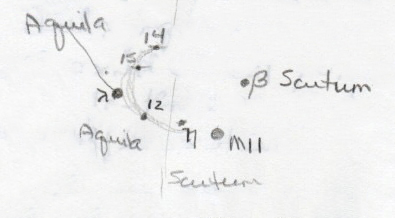Constellations: Delphinus, Lyra, Scorpius, Vega
Asterism: Keystone of Hercules
Stars: Vega ε1, Vega ε2, ν Vega, Sheliak
Messier Objects: M4, M6, M7, M8, M11, M13, M20, M21, M22
Planets: Jupiter, Saturn
Asterism: Big Dipper
Location: Site 15, Big Muise Island, Kejimkujik National Park
Date: 2019-07-31
Time: 9:30 PM - 11:45 PM ADT
Instrument: Visual + 10x42 IS binoculars + TeleVue Ranger 70 mm telescope, f/6.9
Magnifications: x10, x92
Transparency: Good
Seeing: good
Temperature: 28º C at 9:35 PM
SQM: 21.81
We were camping with the Chapmans again for our Annual Big Muise Island Star Party. Around 10:35 PM, lightning periodically lit the sky; Jerry determined the storm was centred over St. Stephen, NB. A little breezy but it did keep the mosquitoes away. The New Moon was expected at 12:12 AM ADT.
Varying degrees of transparency and seeing as the night progressed. Clouds occasionally covered the Teapot that affected the visibility of the stars and globular clusters in the area.
|
Lyra Vega appeared overhead around 9:35 PM. Could easily see the locations of β, ζ, and ε Lyrae. Did not pay particular attention to δ and γ Lyrae. |
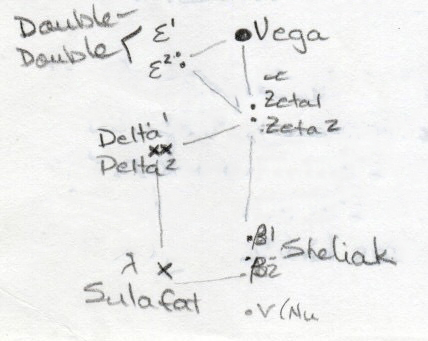 |
||
|
Delphinus At this time, sections of the sky were clear but very murky near the horizon. Used naked eye to find and identify all 5 stars item constellation. |
|||
|
Scorpius Scorpius was identified visually in the S-SE although its tail wasn't visible due to the murkiness at the horizon. The red Antares was clearly visible naked eye and with binoculars. Dave pointed out the 2 stars adjacent to Antares (σ Scorpii and τ Scorpii) both had the same name - Al Nayat. Could see as far down the tail/stinger as ε Scorpii before the remaining stars of the constellation disappeared in the murkiness. |
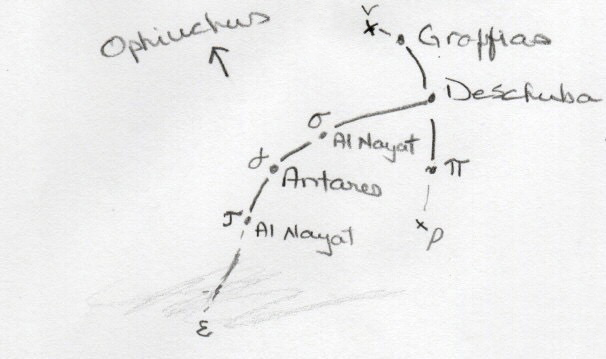 |
||
|
Jupiter (in Scorpius) Observation 1 with Binoculars: Observation 2 with Telescope: |
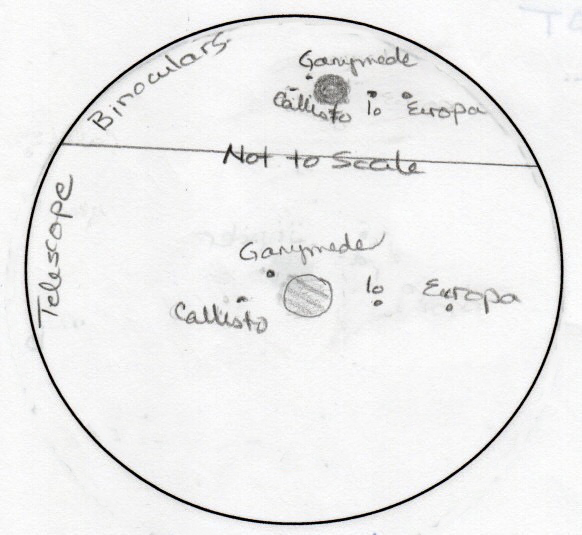 |
||
|
M4 / NGC 6121 Using the binoculars, I could find the small fuzzy M4 at 4 o'clock to Antares. |
M6 / Butterfly Cluster I used Kaus Borealis in the Teapot to find M6 approximately 1.5 FOV away. The grey fuzzy was visible but not as clearly defined as in the past due to the haziness in that part of the sky. |
||
|
Keystone Hercules + M13 / Hercules Globular Cluster I found the Keystone of Hercules almost at the zenith and located all 4 of its stars. Using binoculars, I was able to find the small grey fuzzy between η Herculis and ζ Herculis without any difficulty. |
|||
|
M7 / Ptolemy's Cluster / NGC 6475 In clearer skies, the cluster would have shone almost as brightly as the Pleaides. It was easily located naked eye as a dullish object. I followed the line from Ascella to Kaus Australis in the Teapot and went out 1.5 FOV. The murkiness creating poor seeing and transparency in this part of the sky was quite evident. |
M8 / Lagoon Nebula Made a line from Kaus Australis through the mid-point of the line at the top of the spout, then travelled an equal distance to M8. Could easily see the bright open cluster of M8; could also see M20 in the same FOV. M21 is very close to M20 and therefore easily found within the same FOV. |
||
|
Saturn (in Sagittarius) Observation 1 - Visual: Observation 2 - Binoculars: Observation 2 - Telescope: |
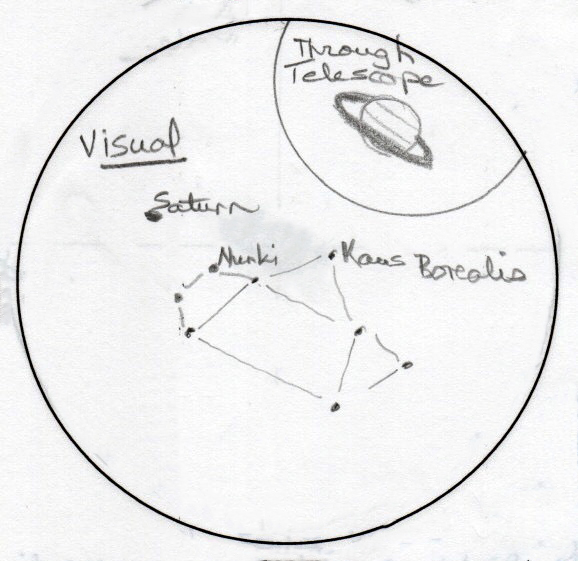 |
||
|
M11 Discovered that M11 is located in the Scutum Star Cloud below a dark nebula Bernard 111. I easily found a 'square' portion of the Cloud with 2 bright objects in its upper border. With binoculars, I found M11 as the left bright object and guessed (with star charts help) that the right bright object was β Scutum. I still consider M11 as the "golf ball" next to an asterism shaped like a golf club. Note:
|
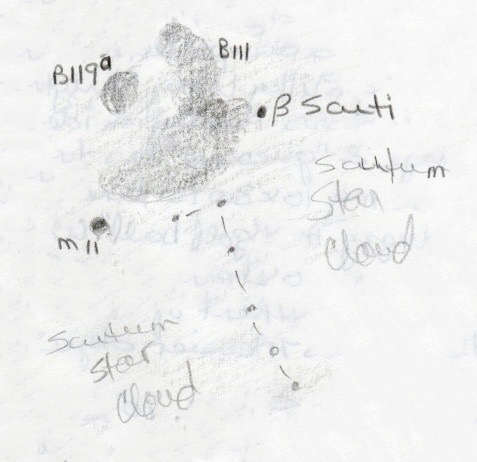 |
||
|
M22 Again, I used Kaus Borealis to locate M22 within the same FOV. It appeared as a small grey fuzzy with no particular details in binoculars. |
|||
